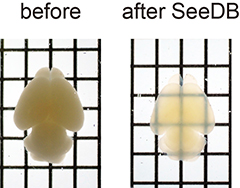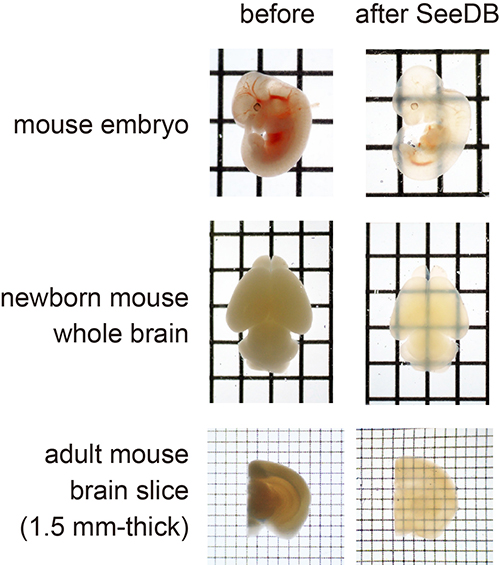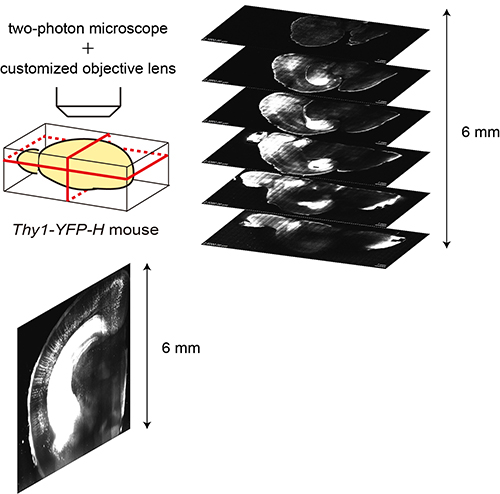Jun. 24, 2013 Press Release Biology
Sugar solution makes tissues see-through
Japanese researchers have developed a new sugar and water-based solution that turns tissues transparent in just three days, without disrupting the shape and chemical nature of the samples. Combined with fluorescence microscopy, this technique enabled them to obtain detailed images of a mouse brain at an unprecedented resolution.

The team from the RIKEN Center for Developmental biology reports their finding today in Nature Neuroscience.
Over the past few years, teams in the USA and Japan have reported a number of techniques to make biological samples transparent, that have enabled researchers to look deep down into biological structures like the brain.
“However, these clearing techniques have limitations because they induce chemical and morphological damage to the sample and require time-consuming procedures,” explains Dr. Takeshi Imai, who led the study.
SeeDB, an aqueous fructose solution that Dr. Imai developed with colleagues Drs. Meng-Tsen Ke and Satoshi Fujimoto, overcomes these limitations.
Using SeeDB, the researchers were able to make mouse embryos and brains transparent in just three days, without damaging the fine structures of the samples, or the fluorescent dyes they had injected in them.
They could then visualize the neuronal circuitry inside a mouse brain, at the whole-brain scale, under a customized fluorescence microscope without making mechanical sections through the brain.
They describe the detailed wiring patterns of commissural fibers connecting the right and left hemispheres of the cerebral cortex, in three dimensions, for the first time. They also report that they were able to visualize in three dimensions the wiring of mitral cells in the olfactory bulb, which is involved the detection of smells, at single-fiber resolution.
“Because SeeDB is inexpensive, quick, easy and safe to use, and requires no special equipment, it will prove useful for a broad range of studies, including the study of neuronal circuits in human samples,” explain the authors.
Reference
- Meng-Tsen Ke, Satoshi Fujimoto, Takeshi Imai. “SeeDB: a simple and morphology-preserving optical clearing agent for neuronal circuit reconstruction”. Nature Neuroscience, 2013, doi: 10.1038/nn.3447
Contact
Takeshi Imai
Laboratory for Sensory Circuit Formation
RIKEN Center for Developmental Biology
Jens Wilkinson
RIKEN Global Relations and Research Coordination Office
Tel: +81-(0)48-462-1225 / Fax: +81-(0)48-463-3687
Email: pr[at]riken.jp

Mouse embryo and mouse brain before and after treatment with SeeDB

Seeing through a 6 mm-thick mouse brain thanks to SeeDB combined with two-photon microscopy
